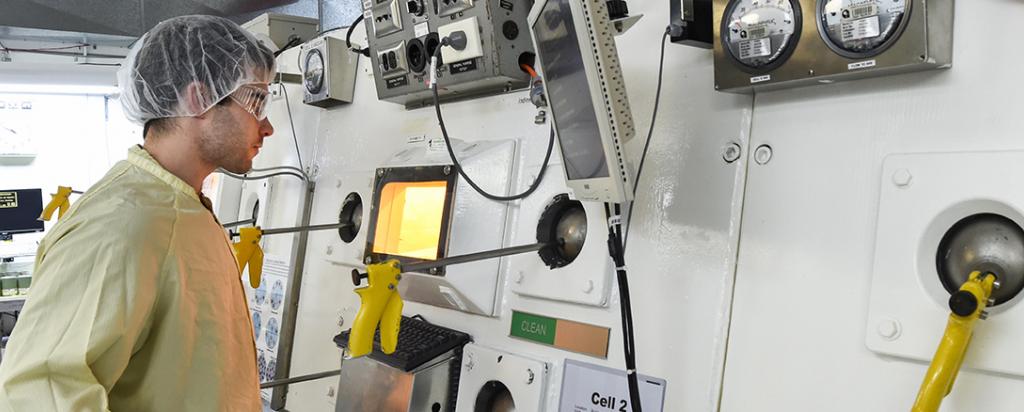
Independent Report - Safety of Building 23
ANSTO has released the Independent Safety Review of the ANSTO Health Approach to Occupational Radiation Safety and Operational Procedures.
The review was conducted by a globally recognised panel of experts, following a directive issued to ANSTO by the regulator, ARPANSA, in June 2018, to select and appoint an expert independent review team to recommend how to improve safety in Building 23 and related matters.
The final report by the independent expert review team contains 85 recommendations in respect to ANSTO, to ARPANSA and to the Australian Government.
The independent expert review team
The independent expert review team comprised five national and international experts led by David Jones, who has extensive experience in the management and production of safety cases and assessments for nuclear facilities in the UK and Europe.
- October 2018: Read ANSTO preliminary response to the Independent Review
- October 2018: Read the ANSTO media release
November 2018: Read ARPANSA’s letter on the 30-day progress report
September 2021: Read about the Australian Government’s $30 million announcement to design a replacement building
October 2021: Read ARPANSA’s progress report on actions from the ANSTO safety review
November 2021: Read ANSTO’s statement acknowledging ARPANSA’s progress report
Video: Independent Review Team Lead

Q&As
What was the scope of the review?
The scope was an independent review of safety at Building 23 and related operations. A full outline of the scope is on Page 17 of the Report
What happens with the recommendations from the independent review now?
As the Report states on Page 15 “The findings of this Report, are therefore not exhaustive, but are designed to provide recommendations to support improved safety, health and organisational effectiveness”. Some 85 recommendations have now been received, and they will be carefully considered over the 60 days from when the report was submitted to ARPANSA.
Is ANSTO meeting modern standards approaches with regard to safety in Building 23?
No. Although building 23 has had five major upgrades in the past 30 years, it is now coming to the end of its life. While it has operated safely for decades, the safe operation of the facility increasingly relies on administrative controls rather than modern standards engineered controls. As the report identifies, this is not unusual within the nuclear industry, but does challenge the long-term sustainability of the B23 facility and the nuclear medicine it produces. ANSTO will now consider the 85 recommendations from the Report, and develop an action plan that addresses nuclear, radiological and conventional safety improvements. Central to our response to the recommendations will need to be a plan to upgrade the ageing infrastructure on which production of Australia’s nuclear medicine currently relies.
Is the OPAL reactor involved?
No. The OPAL reactor is a separate building. OPAL is one of the world’s safest, most regulated and most reliable multi-purpose reactors, and consistently operates for more than 300 days a year. It is independently regulated by Australia’s nuclear regulator, ARPANSA. The Report notes that “The OPAL safety management system is a well-established system commensurate with the operation of a nuclear facility which includes sufficient technical staff to support ongoing operations, changes and safety issues” (Page 31).
What is the role of Building 23?
Building 23 is ANSTO’s nuclear medicine production facility. It is the facility that assembles, loads, tests and distributes a range of ‘finished’ nuclear medicine products, including Mo-99. The Mo-99 is dispensed into an ANSTO radiopharmaceutical Gentech generator where it decays to Tc-99m.
ANSTO Gentech generators safely deliver Tc-99m to hospitals and nuclear medicine practices across Australia every week.
Tc-99m is the most important and commonly used nuclear medicine in the world today. Tc-99m is used to diagnose a variety of heart, lung, cancer and skeletal conditions. If you’ve had a scan for heart disease or cancer, it’s likely you have benefited from the work done by ANSTO’s Building 23 team.
Building 23 was first built in the 1950s to undertake research into radioisotopes, the facility was upgraded over time – and approved by ARPANSA and the TGA– to assemble and distribute health products, including more than 10,000 doses of nuclear medicine per week.
Building 23 has had five major upgrades in the past 30 years but is coming to the end of its operating life. The facility has operated safely for decades, however, there has been one significant incident and three other incidents classified as ‘near misses’ within 10 months since August 2017.
Nuclear medicine milestones
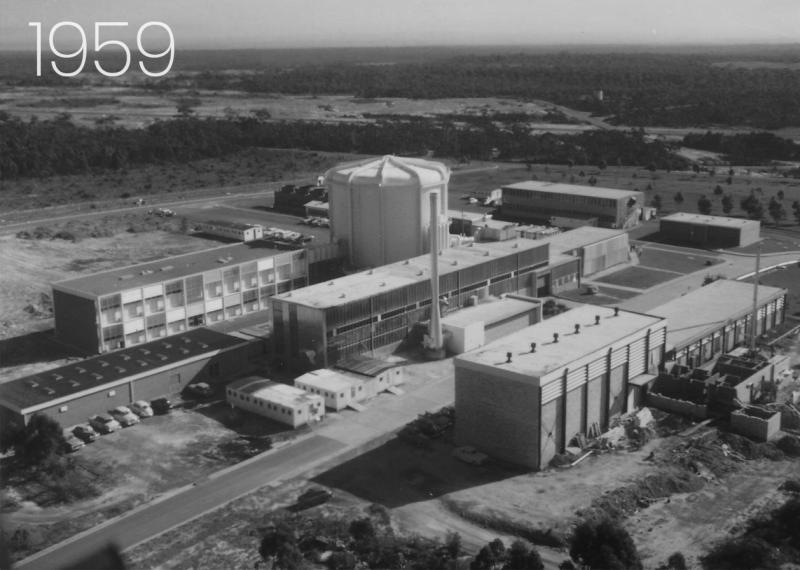
1959
Research facility for the isotopes division

1978
began producing radioactive iodine in 1978, derivatives of which support diagnosis or treatments for thyroid conditions including cancer

1984
started making Mo-99 the parent isotope for technetium Tc-99m used to diagnose a variety of heart, lung, cancer and skeletal conditions
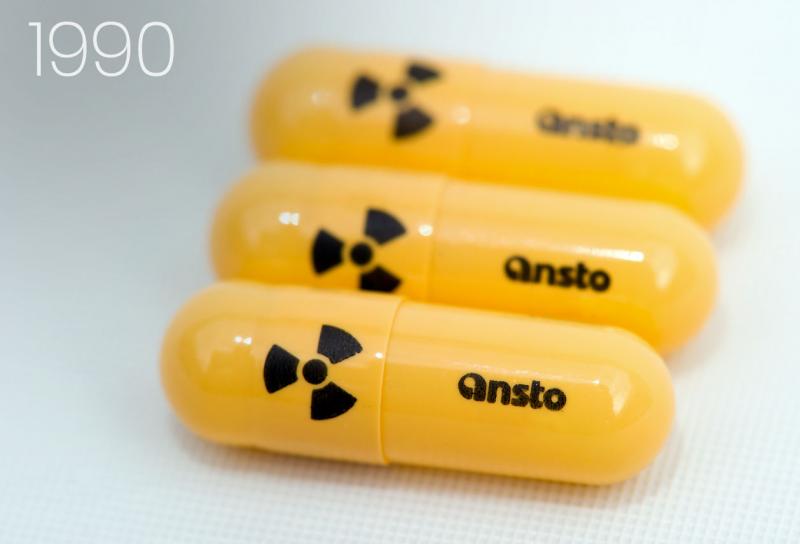
1990
started producing first iodine capsules

1991
Building extension completed to B23 where current generators are assembled as well as current Microbiological testing and manufacturing of Cr-51 and I-123

1993
Major extension to the B23 despatch area including conveyer system and semi-automated packing line and despatch covered areas
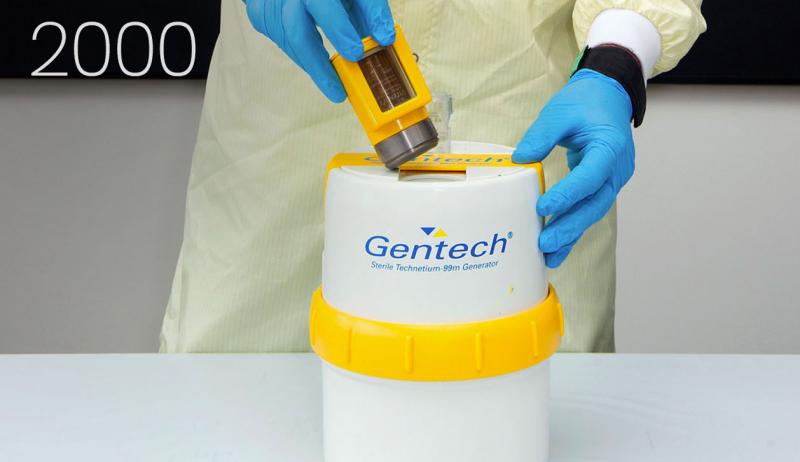
2000
the facility started production of a new type of Mo-99 generator, which is a small, esky-sized shielded container used for transport and production of (Tc-99m). Today generators and other nuclear medicine vessels are sent to 250 hospitals and medical facilities in Australia and overseas
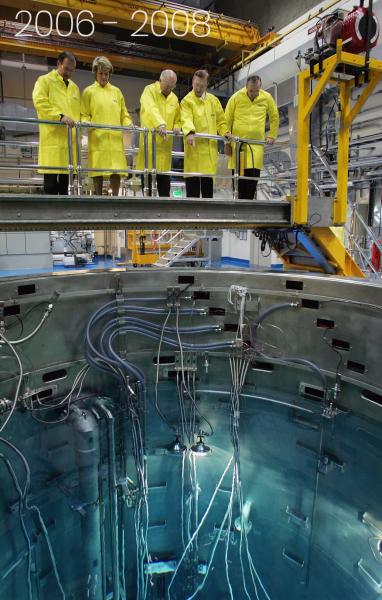
2006-2008
ANSTO's OPAL multi-purpose reactor was commissioned

2008
ANSTO starts exporting Mo-99. ANSTO stepped up to fill shortfall in global market/ doubling production and maintained this volume from then on

2010
ANSTO establishes regular overseas exports

2013
New Building 23 extension for waste processing and handling of manufacturing waste
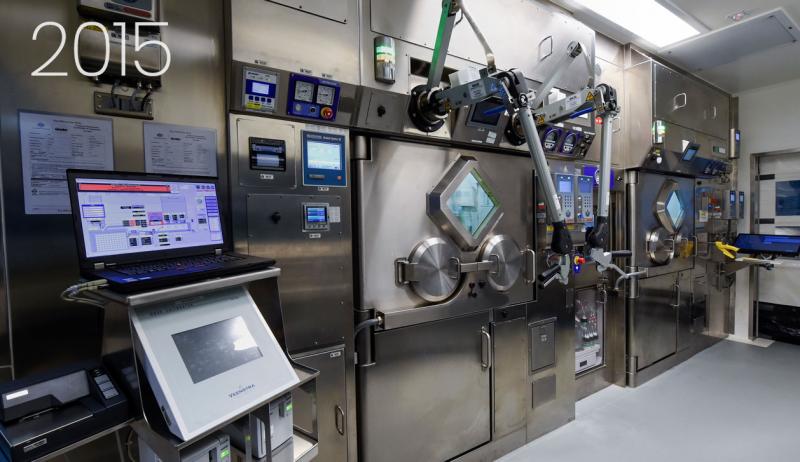
2015
Refurbishment and addition of Lu-177 manufacturing plant into B23 with new rooms and waste process for Lu-177

2016
New QC testing shielded sample preparation room and testing room

2017
August, significant safety incident

2018
June, transport conveyor breakdown in Building 23
Building 23 plays a key role in Australia’s nuclear medicine production
Step 1 - Building 80 | Step 2 - Building 54 | Step 3 - Building 23 |

A uranium alloy target is irradiated in the OPAL multipurpose reactor. Some of the uranium fissions into a range of isotopes, including Molybdenium-99 (Mo-99). | The manufacturing facility separates out the Mo-99. The bulk Mo-99 produced is suitable for export, but not for direct use in clinical settings. | The facility assembles, loads, tests and distributes 'finished' products including Mo-99. The Mo-99 is dispensed into an ANSTO radiopharmaceutical Gentech generator, where it decays to Tc-99m. |
